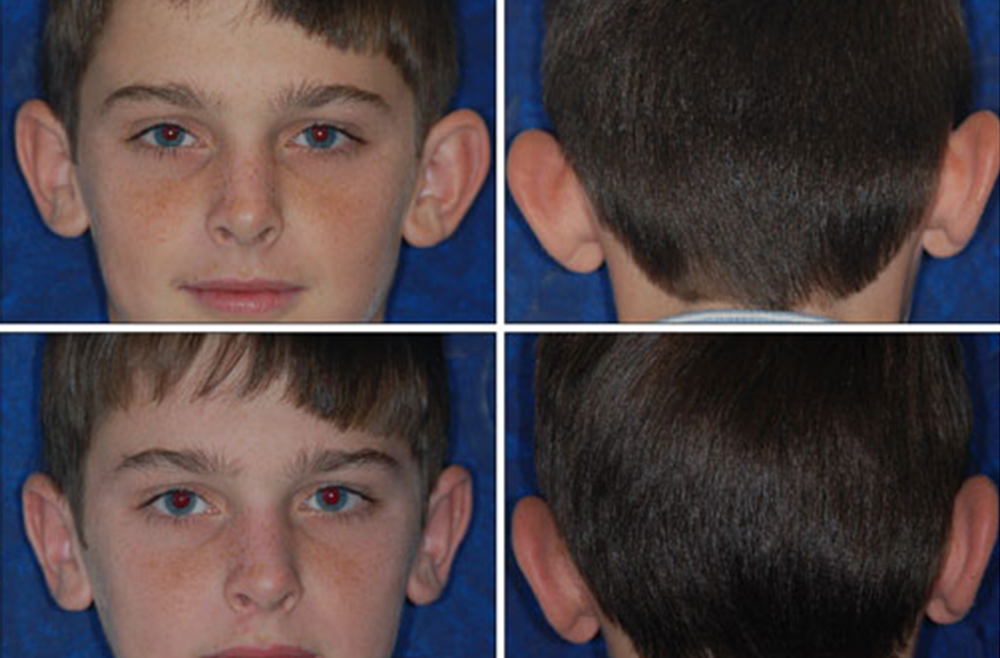Ear Pinning and Split Earlobe Repair
Tired of having dumbo ears? Have you worn heavy earrings and now have torn earlobes? All of these conditions can be easily corrected with simple cosmetic procedures to repair the defects. In patients with prominent ears, an otoplasty, or ear pinning, procedure can be performed to set the ears closer to the head. In patients with split earlobes either due to trauma or long term use of earrings, earlobe repair can be undertaken in an office setting.
Otoplasty
Patients who are born with prominent ears often have a malformation of the cartilage which provides the support of the ear. This is often corrected by making an incision behind the ear, elevating the skin from the cartilage, and then taking a suture and suturing the ear into a more natural appearance. At times, some of the cartilage will need to be removed but this can be done through the same incision. The sutures used will be permanent and do have the possibility of breaking at some point in the life of the patient. If this should happen and the ear become prominent again, the procedure can be repeated.
In older patients, the procedure can be done using local anesthesia. The procedure can be performed in children in early elementary school though general anesthesia is often necessary as these children will not be able to cooperate with the procedure.
The patient is usually expected to wear a compressive headband dressing for a time period and usually a light headband for an additional time. The exact postoperative course is surgeon dependent but care should be taken to ensure that the ears are allowed to heal before returning to contact sports, wearing helmets, or even wearing glasses.
Earlobe repair
Torn earlobes can be the result of trauma or possibly prolonged wearing of heavy earrings. Once the earlobe is torn, one of several procedures can be undertaken to repair the tear. The procedure used will depend on the surgeon’s preference and the desire of the patient to wear earrings again.
The easiest procedure to performs is to simply close the tear. This will work if the patient does not desire to wear earrings again. If the patient wishes to wear earrings again, this is not a good option because the repaired area will only reach a maximum strength of 80% of the natural strength, creating a much weak area for a new tear to form.
If the patient wishes to wear earrings again, either a z-plasty or flap procedure is required to close the tear to allow for adequate strength for another earring. Depending on the actual technique used, the piercing may be left in place and a stud replaced in the healing wound in as little as a weak. The surgeon may opt to allow the wound to heal and undertake a new piercing in 6-8 weeks after maximal healing has occurred.
Regardless of the technique used, the procedure can be undertaken using only local anesthesia. There is virtually no downtime and the patient can resume normal activities very quickly.

